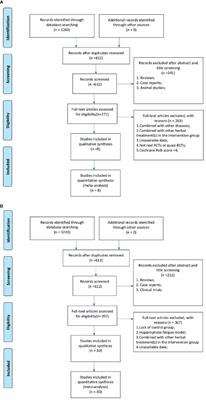SYSTEMATIC REVIEW
Published on 17 Jul 2020
Clinical and Preclinical Systematic Review of Panax ginseng C. A. Mey and Its Compounds for Fatigue

doi 10.3389/fphar.2020.01031
- 9,667 views
- 17 citations
4,656
Total downloads
15k
Total views and downloads
SYSTEMATIC REVIEW
Published on 17 Jul 2020

ORIGINAL RESEARCH
Published on 10 Sep 2019